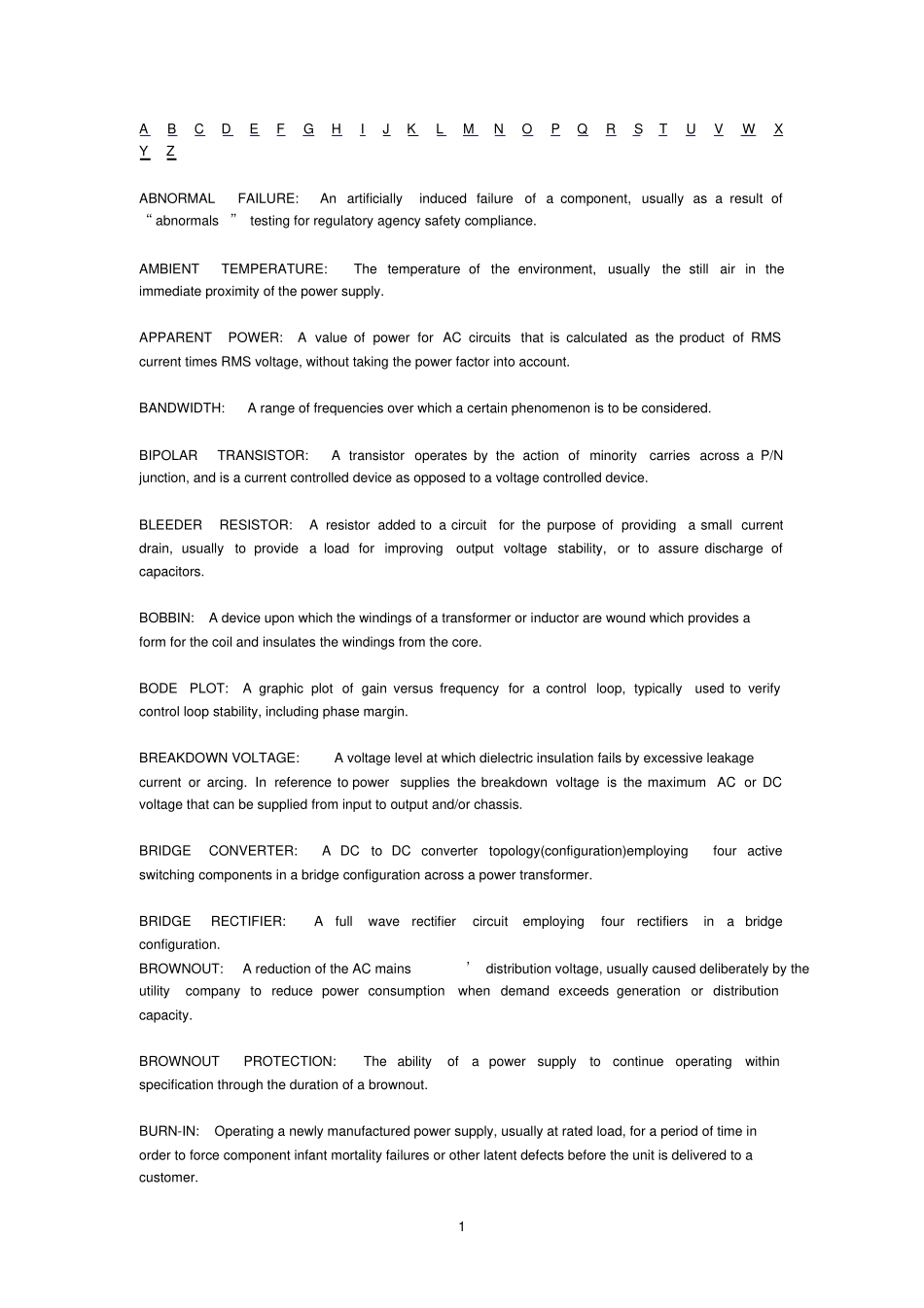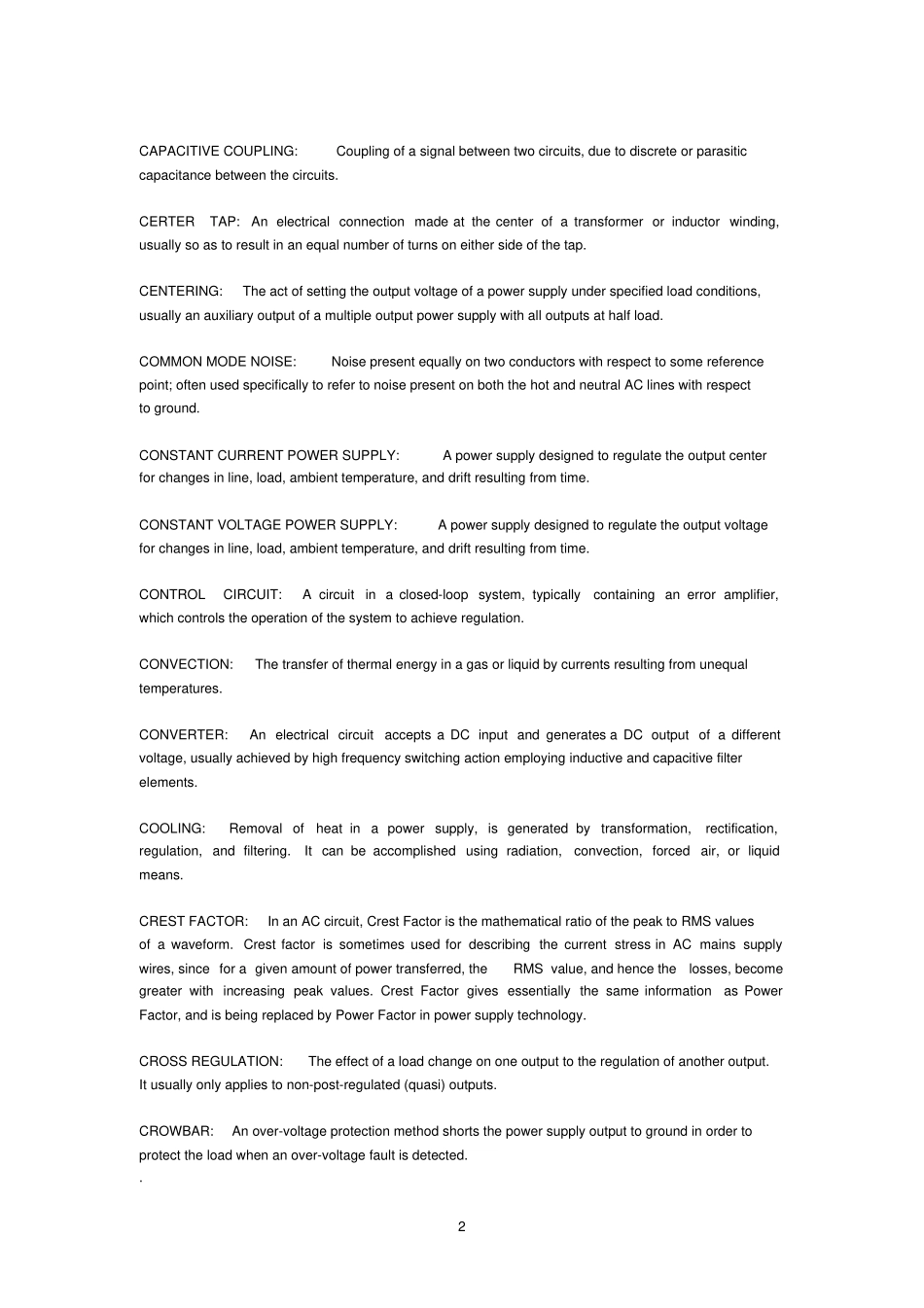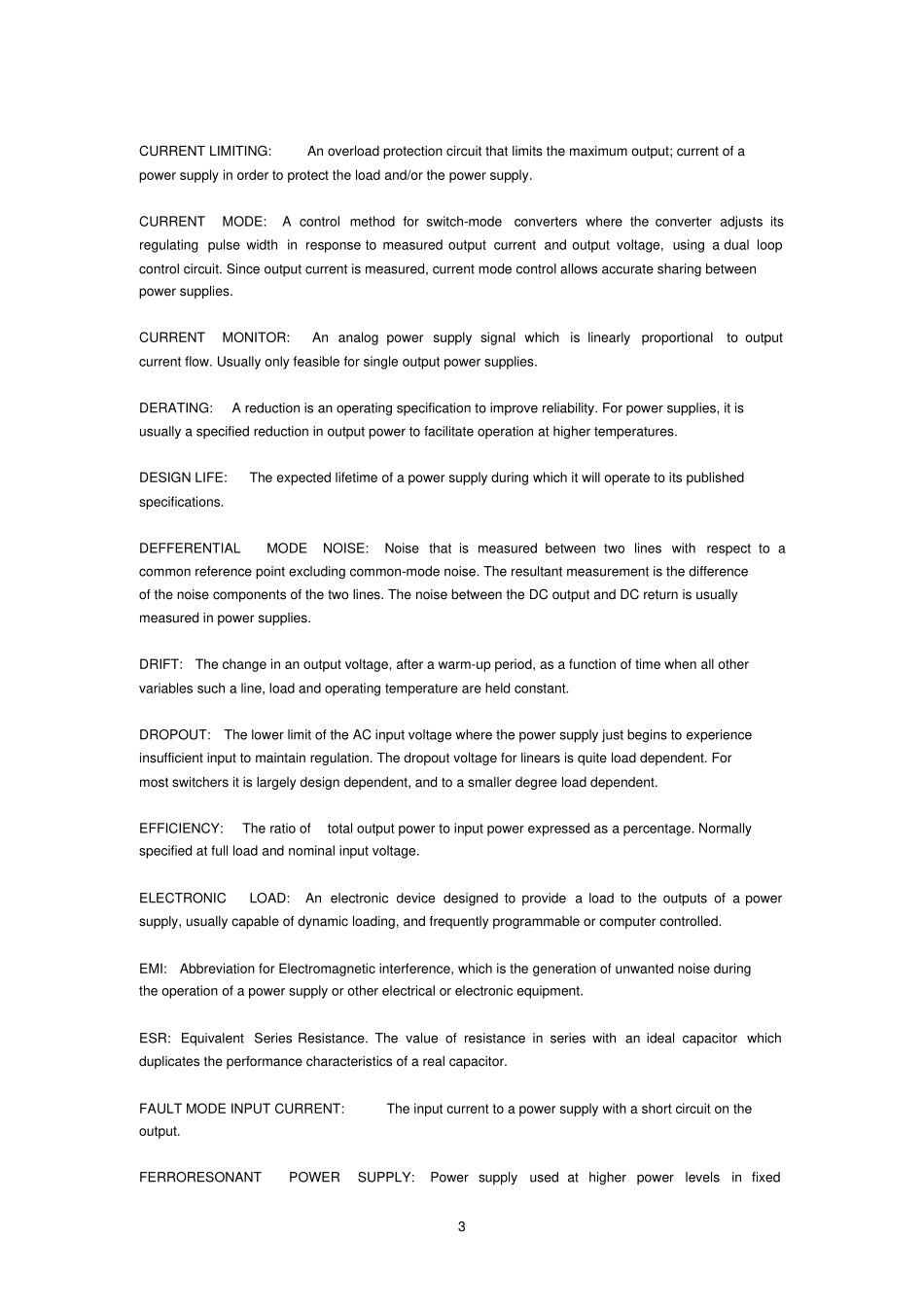1 ABCDEFGHIJ K LMNOPQRSTUVWX Y Z ABNORMAL FAILURE: An artificially induced failure of a component, usually as a result of “ abnormals” testing for regulatory agency safety compliance.AMBIENT TEMPERATURE: The temperature of the environment, usually the still air in the immediate proximity of the power supply. APPARENT POWER: A value of power for AC circuits that is calculated as the product of RMS current times RMS voltage, without taking the power factor into account. BANDWIDTH: A range of frequencies over which a certain phenomenon is to be considered. BIPOLAR TRANSISTOR: A transistor operates by the action of minority carries across a P/N junction, and is a current controlled device as opposed to a voltage controlled device. BLEEDER RESISTOR: A resistor added to a circuit for the purpose of providing a small current drain, usually to provide a load for improving output voltage stability, or to assure discharge of capacitors. BOBBIN: A device upon which the windings of a transformer or inductor are wound which provides a form for the coil and insulates the windings from the core. BODE PLOT: A graphic plot of gain versus frequency for a control loop, typically used to verify control loop stability, including phase margin. BREAKDOWN VOLTAGE: A voltage level at which dielectric insulation fails by excessive leakage current or arcing. In reference to power supplies the breakdown voltage is the maximum AC or DC voltage that can be supplied from input to output and/or chassis. BRIDGE CONVERTER: A DC to DC converter topology(configuration)employing four active switching components in a bridge configuration across a power transformer. BRIDGE RECTIFIER: A full wave rectifier circuit employing four rectif...


